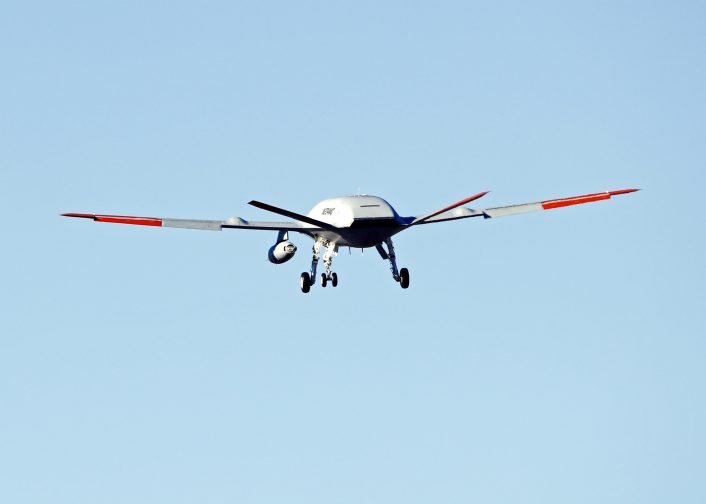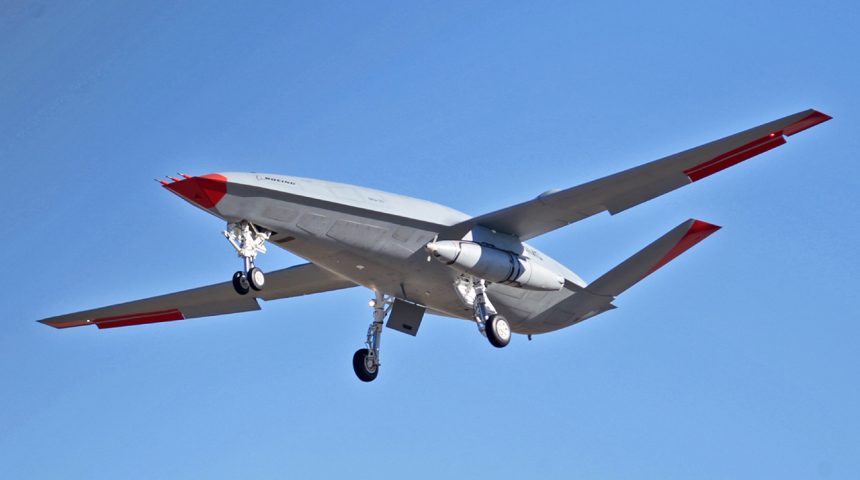Boeing’s Autonomous MQ-25 T1 test asset flew with an ARS (Aerial Refueling Store) for the the first time.
Boeing and the U.S. Navy have achieved a significant milestone in the development of the carrier-based unmanned aerial refueler on Dec. 9, 2020, with the first flight of the MQ-25 T1 test asset with an aerial refueling store.
The Boeing-owned test asset, known as T1 (Tail 1) and sporting the civilian registration N234MQ, completed the successful 2.5-hour flight with the Cobham ARS, that is the same ARS currently used by F/A-18Es for air-to-air refueling. The flight was conducted by Boeing test pilots operating from a ground control station at MidAmerica St. Louis Airport in Mascoutah, Illinois.
Another first for #MQ25! Watch our test asset for the @USNavy unmanned aerial refueler take off for the first time with an aerial refueling pod. The pod contains the hose and basket that will help refuel Navy fighter aircraft. pic.twitter.com/csgBSOJWur
— Boeing Defense (@BoeingDefense) December 9, 2020
“Having a test asset flying with an ARS gets us one big step closer in our evaluation of how MQ-25 will fulfil its primary mission in the fleet – aerial refueling,” said Capt. Chad Reed, the U.S. Navy’s Unmanned Carrier Aviation program manager in a public release. “T1 will continue to yield valuable early insights as we begin flying with F/A-18s and conduct deck handling testing aboard a carrier.”
Future flights will continue to test the aerodynamics of the aircraft and the ARS at various points of the flight envelope, eventually progressing to extension and retraction of the hose and drogue used for refueling. Then, the first plugs with an actual receiver will be carried out.
T1 test asset is the predecessor to the four engineering development model (EDM) MQ-25 aircraft being produced under a 2018 contract award worth 805M USD. It is being used for early learning and discovery and made its first flight last year on Sept. 19, 2019, few days after receiving the experimental airworthiness certificate from the Federal Aviation Administration. Since then, it has accumulated approximately 30 hours in the air before the planned modification to install the ARS. Earlier this year the Navy exercised an option for three additional MQ-25 air vehicles, bringing the total aircraft Boeing is initially producing to seven.
The U.S. Navy intends to procure more than 70 aircraft, which will relieve the F/A-18E Super Hornets from the aerial refueling role they currently have as part of the Carrier Air Wing, allowing the “Rhinos” (as the F/A-18E/F aircraft are dubbed in the aircraft carrier community) to be used for other missions.
The delivery of the first EDM aircraft is expected in FY2021 and Initial Operational Capability (IOC) of the type is planned for 2024.
The MQ-25 Stingray will be the first operational carrier-based UAV. Along with its AAR (Air-to-Air Refueling) capability, it will be able to perform Intelligence, Surveillance and Reconnaissance (ISR) tasks. It is the second UAV to operate from an aircraft carrier, after the Northrop Grumman X-47B Pegasus that was tested both alone (2013) and alongside manned aircraft (2014) from the USS George H.W. Bush (CVN-77) and the USS Theodore Roosevelt (CVN-71).










